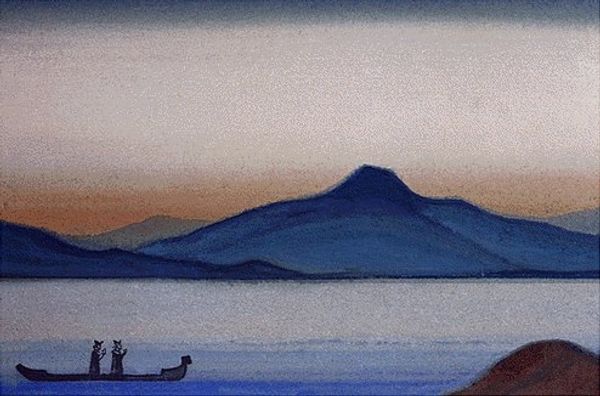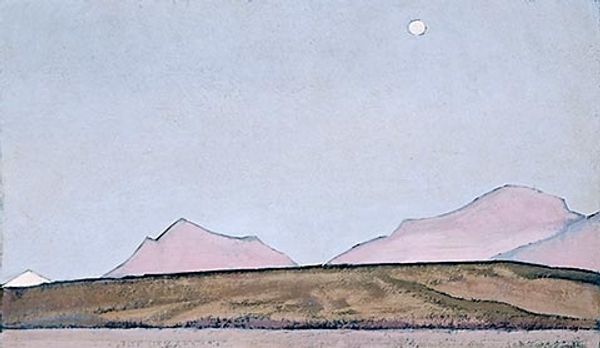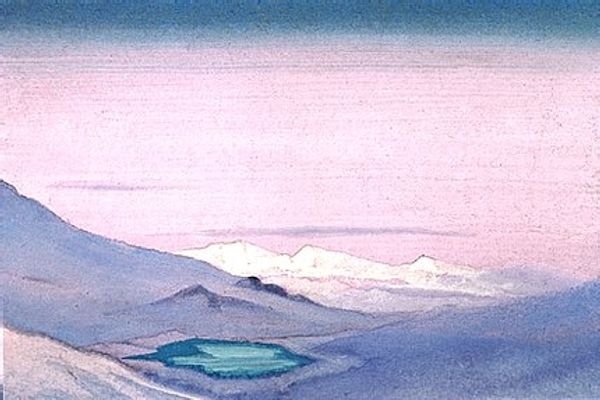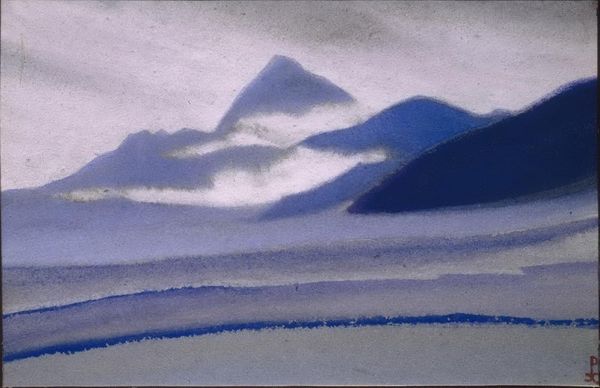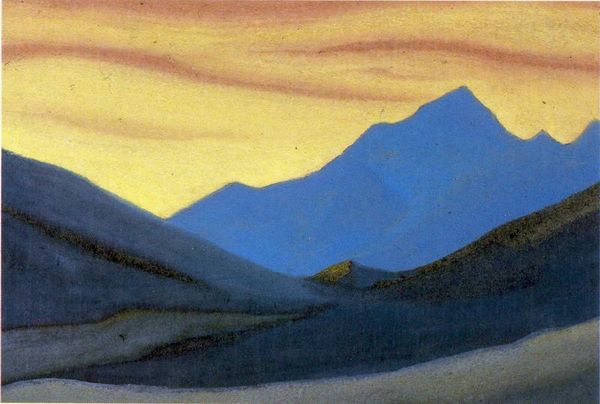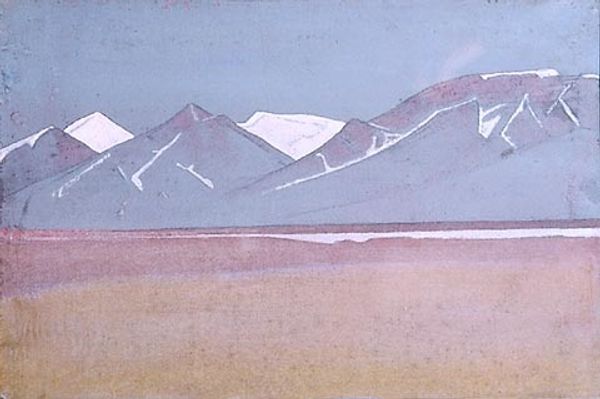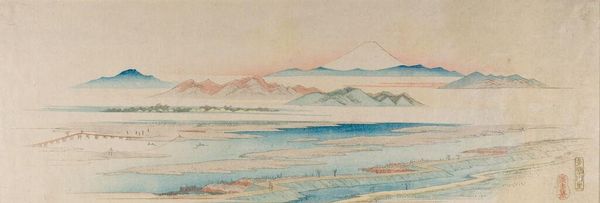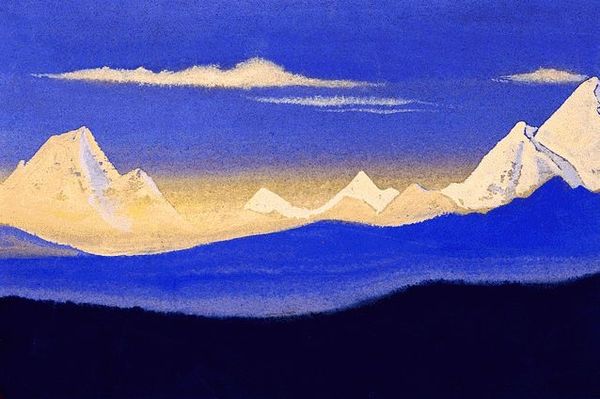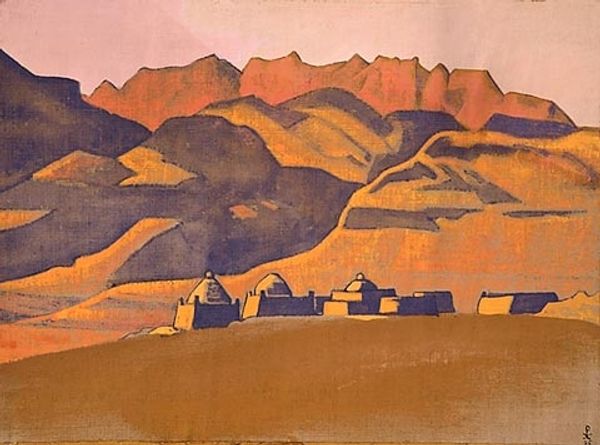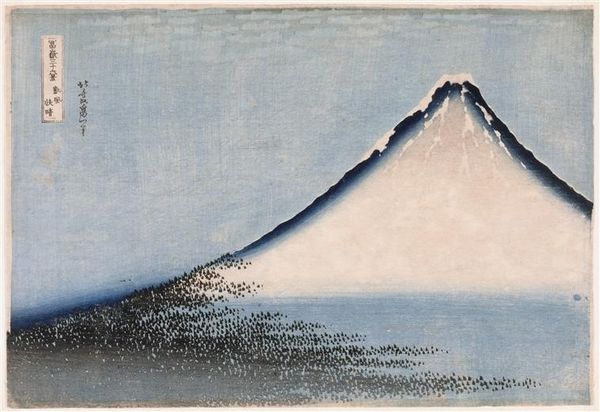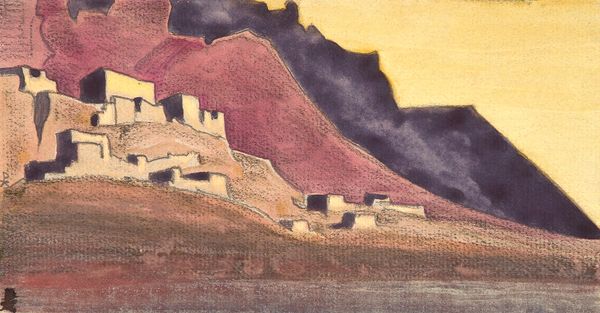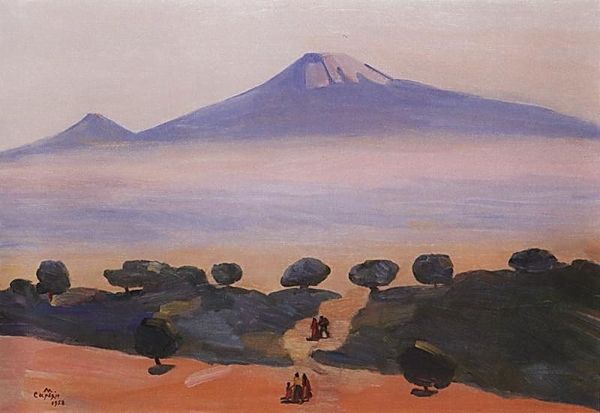
Copyright: Public domain
Curator: This tempera on canvas, titled "Yurtas," was created by Nicholas Roerich in 1931. Roerich was deeply influenced by the spiritual and cultural traditions of the East. Editor: My initial impression is one of stillness and serenity. The subdued colors and the simple, almost geometric shapes of the yurts and mountains evoke a sense of timelessness. It feels very symbolic. Curator: Absolutely. Roerich’s artistic practice was shaped by his deep interest in symbolism, spirituality, and his socio-political activism centered around cultural preservation, especially in areas of conflict. His travels significantly informed his imagery. Editor: You can see the visual vocabulary related to a cluster of dwelling. Look at the mountain in the background, it’s almost like a benevolent ancestor watching over them. It is painted in gentle tones; a very calming and contemplative arrangement of forms. Curator: Right. This work, like many of Roerich’s, reflects his interest in portraying landscapes imbued with spiritual meaning, it goes hand in hand with the artist's beliefs regarding preservation during the 20th century as areas transformed due to conflict. He campaigned tirelessly to keep culture outside of the realms of violence and war. Editor: I'm struck by how the artist uses basic shapes—the dome of the yurts mirroring the curve of the mountains—to suggest a harmony between humanity and nature. It feels deliberate, suggesting interconnection between all living forms that is reinforced throughout many cultural belief systems of the east. Curator: Roerich also conceived public art initiatives like the Banner of Peace that represents the union of art, science, and spirituality through a visual, this search for a deeper and collective understanding permeates Roerich's production. This piece then, and so many others are connected through shared iconography. Editor: Exactly, the color palette is incredibly restrained but unified, mostly pastel and earth tones with only minimal contrasts in shadow, that generates a contemplative feeling; one conducive for spiritual observation, I dare say. It also conveys an idea of humble living. It definitely allows one to look inward. Curator: A very consistent choice that brings us closer to Roerich's vision! This artwork offers a glimpse into a world where nature, culture, and spirituality intertwine, reflecting Roerich's belief in art's power to foster peace and understanding. Editor: Indeed, it's a landscape not just of a place, but of a state of mind; quiet reverence is what comes to mind after taking in these powerful images.
Comments
No comments
Be the first to comment and join the conversation on the ultimate creative platform.
